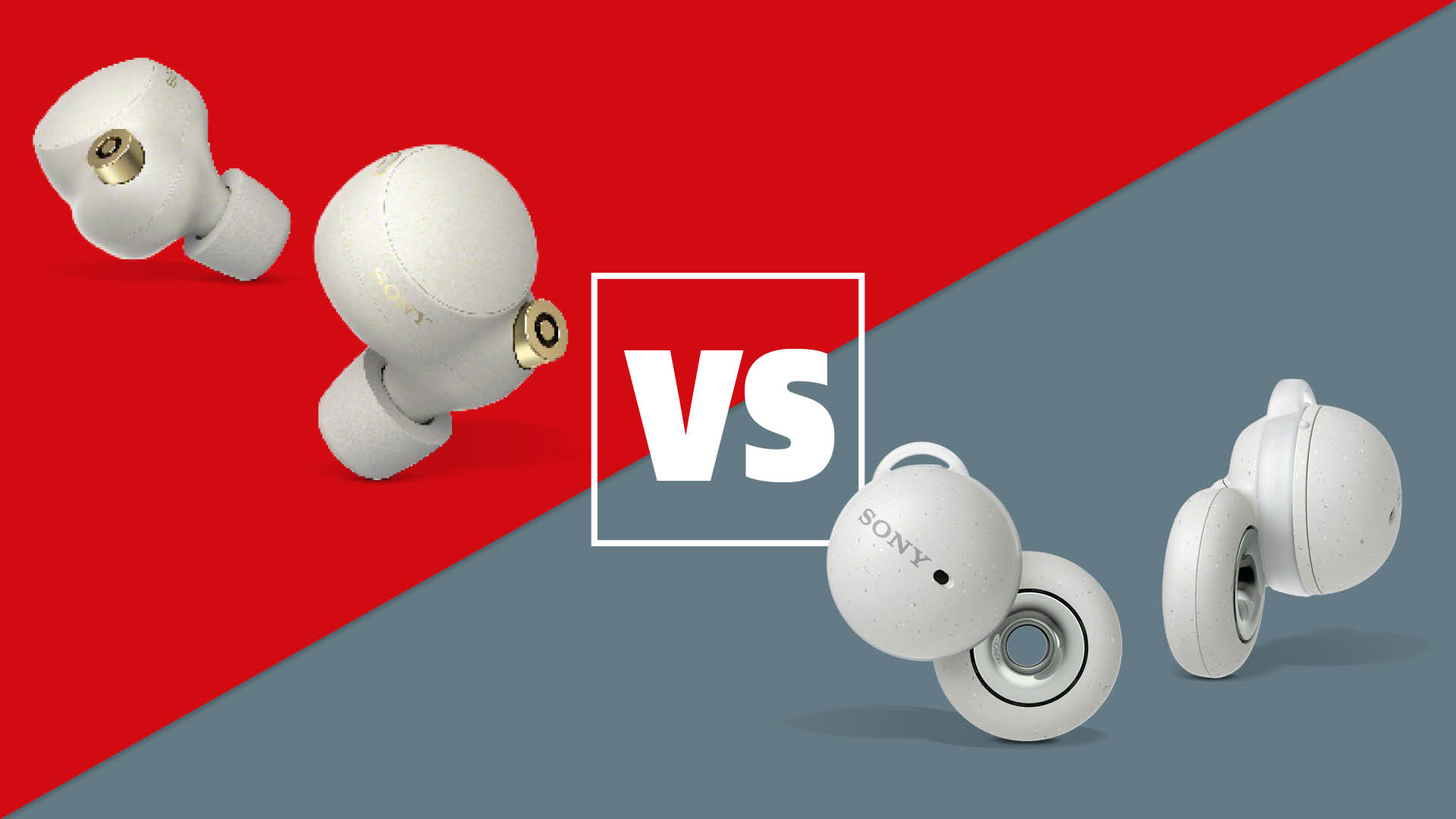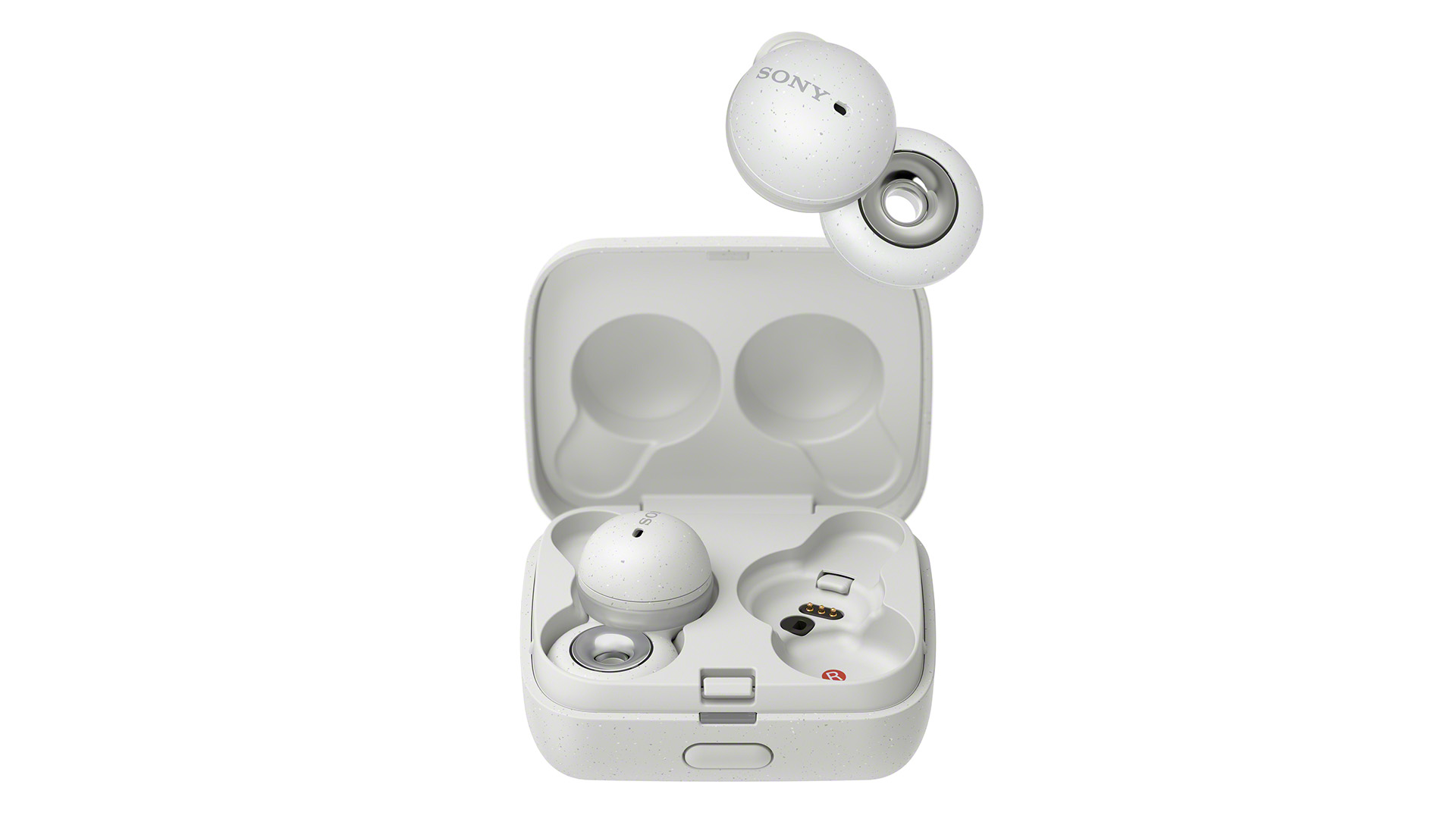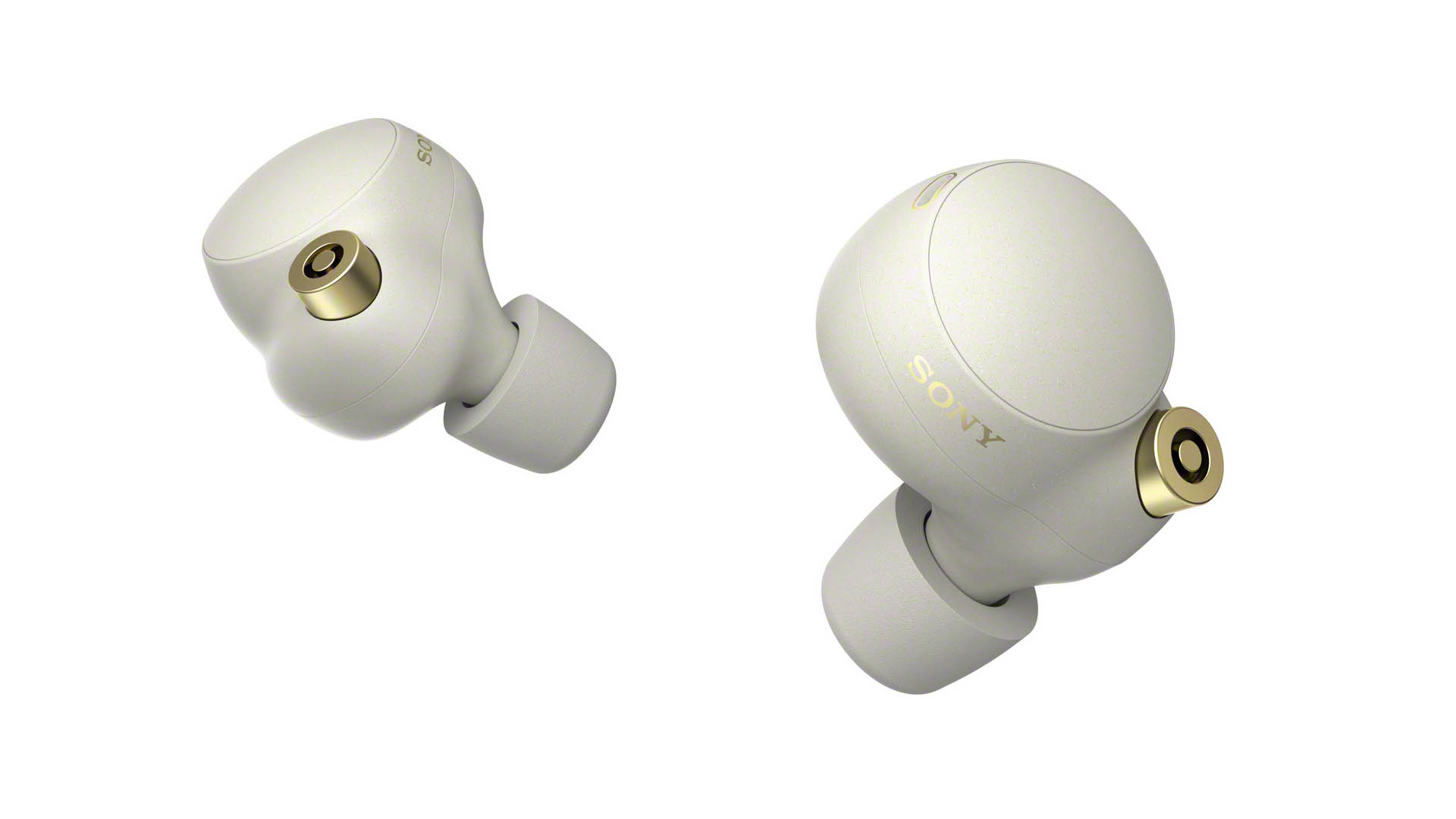Sony LinkBuds vs WF-1000XM4: which Sony wireless earbuds are better?
Sony's latest (and very different) pairs go head to head

Sony makes some of the best wireless earbuds around. For proof, look no further than the WF-1000XM4, which have topped our buying guide for the category since they launched last summer. So, news of the next pair of Sony earbuds is always a pretty big deal.
That's exactly what we got recently when the Sony LinkBuds (WF-L900) broke cover – not least as it didn't mark just a new pair of Sonys but also a new breed of earbuds. The LinkBuds are indeed wireless earbuds – but not as we know them. While most of their ilk aim to block out as much outside sound as possible, the LinkBuds take the opposite approach – in fact, they positively revel in outside noise. The result? A listening experience like no other.
So, two different pairs of Sony earbuds, two very different aural propositions. Which is better? And more importantly, which is best for you? Let's find out...
- Read our full Sony WF-1000XM4 review
- Read our full Sony LinkBuds review
Sony LinkBuds vs Sony XM4: price
As the two pairs are very different propositions, it's not wholly surprising they differ in price. The WF-1000XM4 are Sony's flagship offering, designed to compete at the premium end of the market alongside the likes of the Bose QuietComfort Earbuds, Sennheiser Momentum True Wireless 2 and Apple AirPods Pro. Hence, their RRP is in line with them at £250 ($280, AU$450).
Outside of your budget? This race might have been run already, then. The LinkBuds are quite a lot cheaper, retailing at £150 ($180, AU$300). That's more of a mid-range price, closer to the class-leading Panasonic RZ-S500W, Cambridge Audio Melomania 1 Plus and Shure Aonic Free.
Remember, though, you don't necessarily need to pay full price for either pair. There are always deals to be had, with the best prices on both models available below:
- See the best wireless earbuds deals on the internet
Sony LinkBuds vs Sony XM4: design

The design is the first discrepancy you'll notice between the two Sony models. It'll certainly be the first thing that hits you about the LinkBuds especially, as here lies its USP. Instead of the usual ear tip, they feature a circular section with a hole in the middle – it looks a bit like a smoothed-off Polo Mint (or Life Saver, if you're American). But they're not different just for the sake of it – there's function to this form.
That ring houses a 12mm driver, which slides into the bottom part of your ear from where it fires music into your lughole. There's no tip burrowing into your ear canal, which many people will welcome. Rather than shutting out the outside world, the aim is to welcome it in to make you more aware of your surroundings.
Despite all this re-engineering, the LinkBuds still manage to be quite small. In fact, they're 51 per cent smaller than the XM4, which is something to bear in mind if you have small ears. They’re 44 per cent lighter, too. And colours? Your options are grey or white.
The XM4 might be a little less innovative on the design front, but they still tick all the boxes. They're rounder than their predecessors (the WF-1000XM3) and sit more inside the ear opening. Their matte finish feels suitably premium, with small accents around the microphone and sensor holes providing a welcome splash of colour. Speaking of colour, the XM4 come in a choice of black or silver.
The ear tips are made from polyurethane, which feels like a cross between silicone and foam, and they provide a nice, tight fit. They expand in the ear, too. Combined with the ANC, they do a good job of cancelling out background noise.
In terms of withstanding the elements, both the LinkBuds and XM4 are rated IPX4, which means they can shrug off water splashing from any angle. If you want any more than that, you're advised to get a pair of dedicated sports headphones.
Sony LinkBuds vs Sony XM4: comfort

The XM4 might have a more intrusive design than the LinkBuds, but we wouldn't describe them as uncomfortable. In fact, the opposite is true – we would (and do) wear them happily for hours at a time.
To make sure you have a good fit, Sony has introduced an air-tightness test, accessible through its Headphones Connect app. The app fires out a test tone and reports back on whether or not you need to make any adjustments. It’s worth trying out, especially if you feel the sound is lacking bass or there is outside noise leaking in. The right fit will not only mean better sound quality, it will also make the headphones more comfortable, so it's worth taking the trouble over.
Of course, a new design doesn't have to just look good – it has to work well, too. And a big part of headphones' appeal is comfort. You'll be wearing them for potentially hours at a time, after all, so it's not much good if they cause you earache after five minutes. The LinkBuds certainly pass this test. The ring driver rests gently in but doesn't dig into your ear, while the actual bud section nestles neatly in the upper part of your ear, secured in place by a small plastic loop.
The loops are smaller than the rubber wingtips you get with some rivals, and Sony gives you five different sizes to choose from (XS, S, M, L and XL). If you want to change the size, simply peel the loop away from around the edge of the bud section and replace it with your loop size of choice. It’s a very simple procedure.
Sony LinkBuds vs Sony XM4: battery life

The XM4 lead the pack when it comes to battery life. They boast eight hours of run time from the buds themselves, plus another 16 hours from the carry case. That makes a total of 24 hours of playing time before you need to find a wall socket. Those numbers are with active noise cancellation (ANC) turned on, too – turn it off, and they'll last even longer.
Not only that, they juice up in double quick time as well. Just five minutes of charge time and they're good for an hour of use. Oh, and the case can charge wirelessly too, using a compatible Qi charging pad. Impressive.
The LinkBuds don't fare nearly as well in this regard, as is typically (but not always) the case with more affordable true wireless pairs. They last 5.5 hours, plus a further 12.5 hours from the case, giving you a total of 18 hours. That isn't bad, mind, and will certainly be enough for most people. Probably not a deal-breaker but the case also doesn't charge wirelessly, so you'll have to plug it in.
Sony LinkBuds vs Sony XM4: features
Being Sony's range-toppers, the XM4 are bursting with features.
The circular outer surface of each earpiece is a touchpad and, by using the Headphones Connect app, you can customise each's functionality. Switching between sound modes, changing volume and activating and deactivating features such as Quick Attention (which drops the volume of what you’re listening to, so you can have a quick conversation without having to remove the earbuds from your ears) happens with minimal fuss.
The Sony XM4 borrow the Speak-to-Chat function that debuted in the WH-1000XM4 wireless over-ear headphones. This allows you to talk to someone while the earbuds are still in place and is triggered when you start talking, and we find it works well.
On the inside of the XM4 is plenty of impressive technology. The earbuds feature Sony's latest DAC and analogue amplifier for earbuds and are powered by a new Integrated Processor V1 that the company claims provides clearer sound and improved noise-cancelling over its XM3 predecessor. The XM4 also get Sony’s DSEE Extreme audio processor with Edge-AI, which is designed to upscale low-bitrate music files to near hi-res quality.
There’s no aptX HD support onboard, but the XM4 support Sony’s LDAC file format, which, streamed over Bluetooth from a compatible source, allows hi-res audio files up to 24-bit/96kHz to be transmitted at data rates of up to 990kbps.
Sony has also aimed to deliver clearer call quality with new features, including beam-forming and the use of a bone conduction sensor that stops the mics from picking up distracting ambient sounds while you’re talking. There’s an automatic does-what-it-says-on-the-tin wind noise reduction mode, too. The result is an impressive call quality for a pair of wireless earbuds.
The general level of noise-cancelling is excellent, especially for a pair of wireless earbuds. Not everyone likes that ‘vacuum’ feeling you get when it’s turned on, but it’s extremely effective. You’ll struggle to find better noise cancellation at this level.
Android users will be pleased to hear the XM4 are compatible with Fast Pair so you can get up and running with minimal fuss. Unfortunately, iOS users don’t get any such pairing perks, but all you need to do to start pairing is open the case and take the headphones out.

Now for the LinkBuds, which do have similar, but overall fewer, features. They use the same Integrated V1 processor as the XM4, along with the same DSEE (Digital Sound Enhancement Engine) technology to help restore quality lost in compressed digital music.
They also have a similar focus on call quality, thanks to Clear Call with AI – a noise-reduction system designed to reduce outside interference. As a result, your voice sounds clear and focused and the tech combines with the built-in mics to make it easy for the person on the other end of the line to hear what you’re saying.
As is the case with most Sony wireless headphones, you’ll want to download the company’s Headphones app to help you make the most of the features on offer. Some are new, such as the nine different preset EQs you have access to, and some have been carried across from the pricier WF-1000XM4, such as Speak-to-Chat.
Although Sony has designed the LinkBuds to help blend the outside world into your listening experience, there will be occasions where it threatens to overpower the music you listen to. To help, Sony has added Adaptive Volume Control to the LinkBuds, which automatically increases the volume to compensate for any increase in background noise before dropping back to the original volume level.
You can also use the app to set up touch controls, but the LinkBuds offer a very different kind of touch control to what you’ll be used to. You can tap the surface of the main bud as is customary, but there's also something called “Wide Area Tap”, which allows you to control the buds by tapping on the surface of your skin, just in front of your ear. It sounds like a gimmick but actually works well.
Sony LinkBuds vs Sony XM4: sound quality

So, both headphones have decent design chops and ample, yet different, feature sets for the money. But how do they actually sound?
As you would expect for a pair topping our list of best wireless earbuds, the five-star XM4 sound superb. Honestly, they're the best there is at the time of writing, so if sound quality is paramount, these are the wireless earbuds for you.
Bass quality and clarity is nothing short of stunning, with a fantastic amount of detail. It allows the XM4 to communicate intricacies in the bass notes that other headphones struggle to uncover. This clarity extends across the board, with a sense of rhythmic precision that allows the XM4 to switch pace effortlessly.
The LinkBuds are a completely different beast – the old adage about comparing apples and oranges applies here. Because they let in outside sound, you don’t get the same sense of isolation as you do from the XM4. Initially, low frequencies seem to lack a bit of weight and solidity compared to more traditional designs. The more you listen, though, the more you realise there is actually enough bass on offer to keep you interested. More importantly, the LinkBuds still maintain a fine sense of balance.
One big benefit of the ring driver and this more open design is you’re treated to a big, open sound that’s a real highlight and very different from anything you’ll have heard from more intrusive in-ear designs. They also offer Sony's trademark musicality. Whatever the genre, music never sounds awkward or ill-conceived as the headphones just go about their business.
Detail levels are good for the money, although how much of that you’ll hear can be affected by ambient noise levels. Listen to a delicate, classical piece with just a piano and the keystrokes do have to battle with outside noise for superiority. If this kind of music is your bag, we would recommend listening when there’s no background noise. Also, the LinkBuds aren’t the last word in dynamic expression compared to some more upbeat rivals. It's these two things that have the LinkBuds settling for four stars – very good but not great. If the LinkBuds could up the entertainment factor a couple of notches, they’d be knocking on the door of that fifth star.
Sony LinkBuds vs Sony XM4: verdict
You might expect two pairs of wireless earbuds from the same company to be pretty similar, but you couldn't be more wrong. While the LinkBuds and XM4 do share some similar traits and features, the approaches they take to listening on-the-go are completely opposite. The LinkBuds create an open soundstage, making your music mingle with the outside world, while the XM4 give you a hermetically sealed isolation bubble, allowing you to let sound in only when you ask it of them.
Both approaches have their strengths and weaknesses. The LinkBuds make you more aware of your surroundings but don't let you hear as much detail in the music. The XM4 serves up detail in spades but cut you off from your environment.
There's no denying that the pricier XM4 are a cut above, sonically speaking. But really, it comes down to which approach you prefer, and what your budget is. If you like the isolation, and have the funds, the XM4 are a no-brainer. If you want a unique listening experience that blends with the noises in your neighbourhood, and that costs a bit less, the LinkBuds are for you.
MORE:
Check out the newer, more conventional Sony LinkBuds S
Want cheaper traditional true wireless earbuds? We'd recommend the Panasonic RZ-S500W
Our roundup of the best AirPods alternatives you can buy
Should you buy the older XM3 for less? Here's our Sony WF-1000XM4 vs WF-1000XM3 lowdown
Get the What Hi-Fi? Newsletter
The latest hi-fi, home cinema and tech news, reviews, buying advice and deals, direct to your inbox.
Joe has been writing about tech for 20 years, first on staff at T3 magazine, then in a freelance capacity for Stuff, The Sunday Times Travel Magazine (now defunct), Men's Health, GQ, The Mirror, Trusted Reviews, TechRadar and many more. His specialities include all things mobile, headphones and speakers that he can't justifying spending money on.

